Ah, love: ain’t it grand? In theory, yes, although we have it on the best possible authority – Shakespeare, of course – that the path of true love never did run smooth.
Orpheus and Eurydice
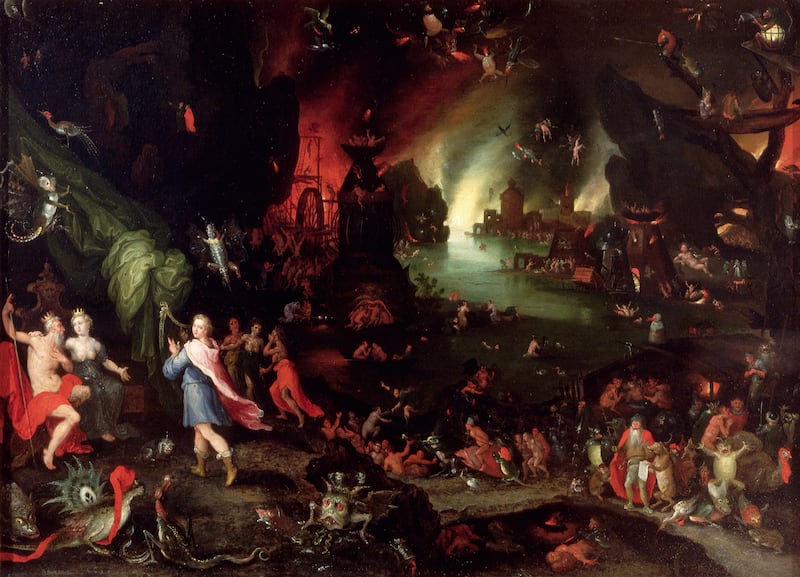
Those ancient Greeks, eh? Democracy, philosophy, mathematics, engineering and much more besides. Happy endings, though? Not so much, and especially not in mythology. Rapturously in love, the musician Orpheus marries Eurydice only for her to be bitten by a viper and descend into Hades. Undaunted, Orpheus harrows hell, stuns the underworld with some filthy licks on his lyre, and secures Eurydice’s release from the eternal flames – if only he can resist gazing upon her until they’re back in the upper world again. Sounds like a small (if bizarre) thing to ask, but Orpheus can’t resist. “No reproach passed her lips,” Ovid reports as the damned Eurydice sinks into the depths eternal once more, from which we can safely assume that Ovid (a) wasn’t an eyewitness and (b) had very little experience of wives whose husbands can’t do the one bloody thing they’re asked to do.
Romeo and Juliet
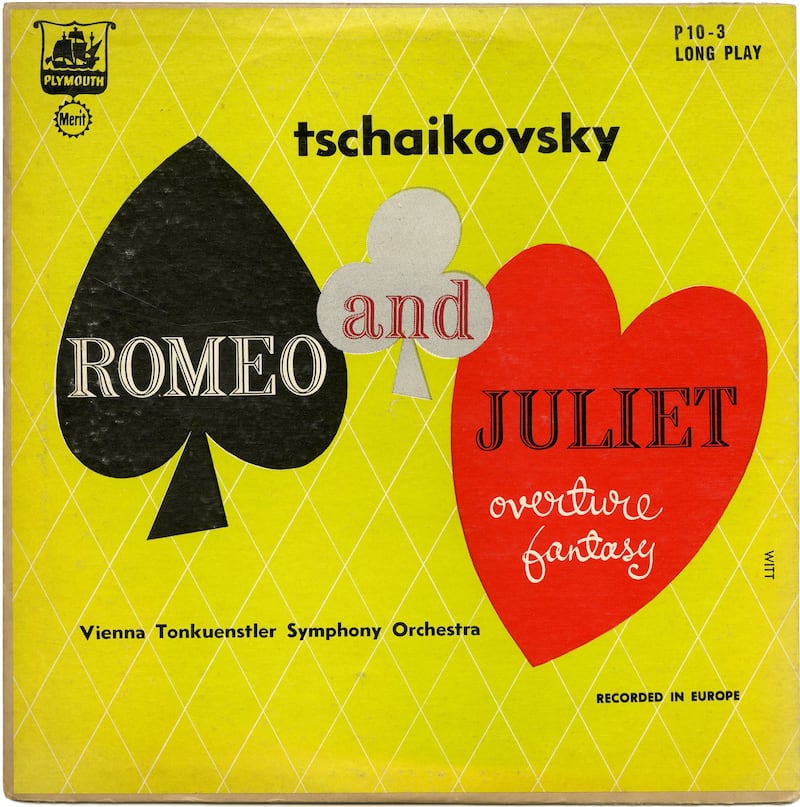
“We started out like Romeo and Juliet,” a lovelorn Milhouse laments in The Simpsons as he pines for Samantha Stankey, “but it ended up in tragedy!” Well, quite. Shakespeare’s tale of star-cross’d lovers was derived from Arthur Brooke’s poem The Tragicall Historye of Romeus and Juliet, and would in turn be adapted by Tchaikovsky in 1870. Largely ignored when it first premiered (the piece would be twice revised), Romeo and Juliet is one of Tchaikovsky’s earliest compositions: bookended by serene, wistful movements representing Friar Laurence as he oversees the lovers’ quest, the work segues into a chaotic theme to represent the feuding Montagues and Capulets before delivering the heart-stopping love theme itself. “If music be the food of love,” says Shakespeare’s Orsino, “play on”, although Tchaikovsky, who condensed Shakespeare’s five acts into a 20-minute fantasy overture, was obviously writing for an audience that preferred it when romance didn’t outstay its welcome.
Love in the Time of Cholera
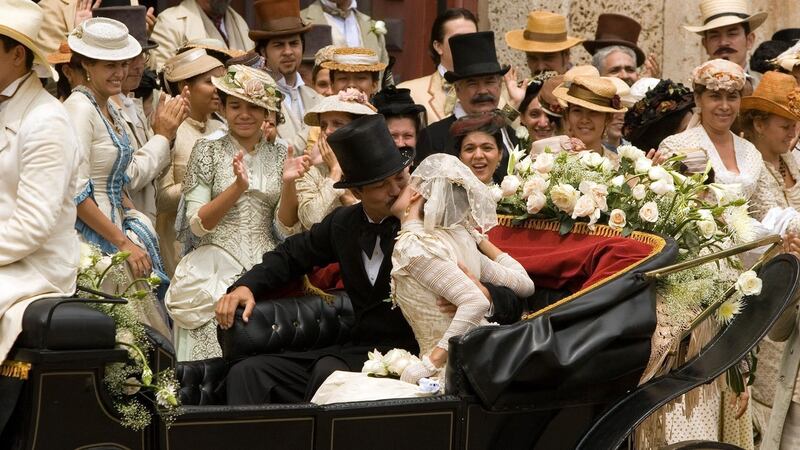
Love is patient and kind, as Corinthians 13:4 and virtually every wedding Mass reminds us. Love is certainly patient in Gabriel García Márquez’s Love in the Time of Cholera (1985), which charts Florentio Ariza’s obsession with Fermina Daza from the 1870s to the 1920s. Not a chap to be easily rebuffed, our Florentio: having fallen for Fermina as a moody teen, this dapper man about town weathers the many emotional storms that follow, which include the outbreaks of the foreshadowed plague and Fermina’s loving marriage to the Colombian national hero Dr Juvenal Urbino. Faint heart never won the fair lady, of course, so it’s just as well that Florentino’s heart proves stronger than that of Dr Urbino, who keels over while attempting to rescue a parrot from a tree, thus allowing Florentino to finally sweep the widow off her feet, some 50 years or so after he was first dazzled by her peerless beauty. Love never comes too late.
The Song of Everlasting Regret
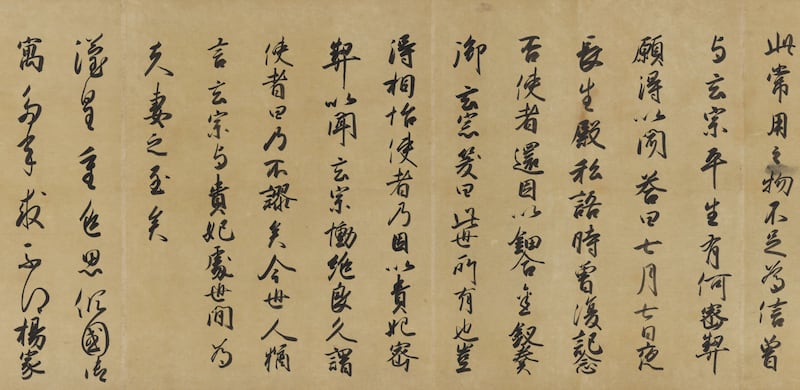
“Shall I compare thee to a summer’s day?” Please do, kind sir. But while it’s fair to say that Shakespeare has pretty much cornered the market in popular love sonnets, there’s something much more satisfyingly tragic about the epic love poem. Take Kit Marlowe’s Hero and Leander, in which the lovers are doomed once the fate-tempting bard starts philosophising on the nature of love: “Where both deliberate, the love is slight: Who ever loved, that loved not at first sight?” For a truly epic poem that ends in inevitable tragedy, however, we look to Bai Juyi’s Song of Everlasting Regret (or Sorrow), which details the love affair between the Chinese emperor Tang Xuanzong (685-762) and his favourite concubine, Yang Yuhuan, which was of such a red-hot passion that the emperor neglected his more prosaic duties – passing laws, suppressing dissidents, etc – and so failed to anticipate the rebellion that eventually forced him to abdicate his throne and Yang Yuhuan to hang herself by way of forced contrition. Still, better to have loved and lost, etc.
The Price of Salt
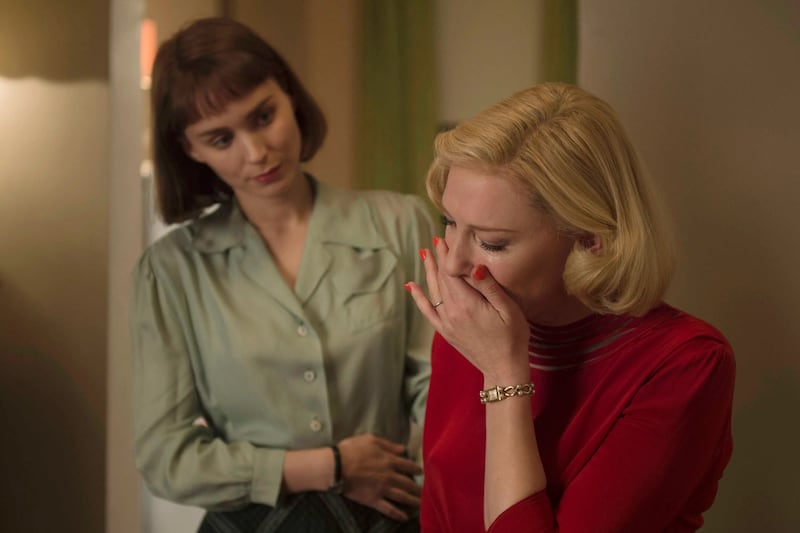
All hail Patricia Highsmith, high queen of the dark, twisted psychological thriller. And, on occasion, author of quite brilliant romance, even if Highsmith initially published The Price of Salt under the pseudonym Claire Morgan because she didn’t want to be pigeonholed “as a lesbian writer”. Inspired by a glimpse of a blond woman wearing a mink coat, Highsmith wrote a novel about a young New York shop girl, Therese Blivet, who is unhappy in her relationship with Richard, and who strikes up a friendship with the married Carol Aird. At which point, in a typical Highsmith novel, the pair should commence plotting to murder some third party, and probably Carol’s overbearing husband, Harge. Here, however, Highsmith does something wholly unexpected: she gives her lesbian lovers a happy ending!
The film version, adapted by Todd Haynes in 2015, and renamed Carol, stars Cate Blanchett and Rooney Mara. It won a host of awards, including that year’s Queer Palm at Cannes. One wonders what Highsmith would have made of it all.
Casablanca
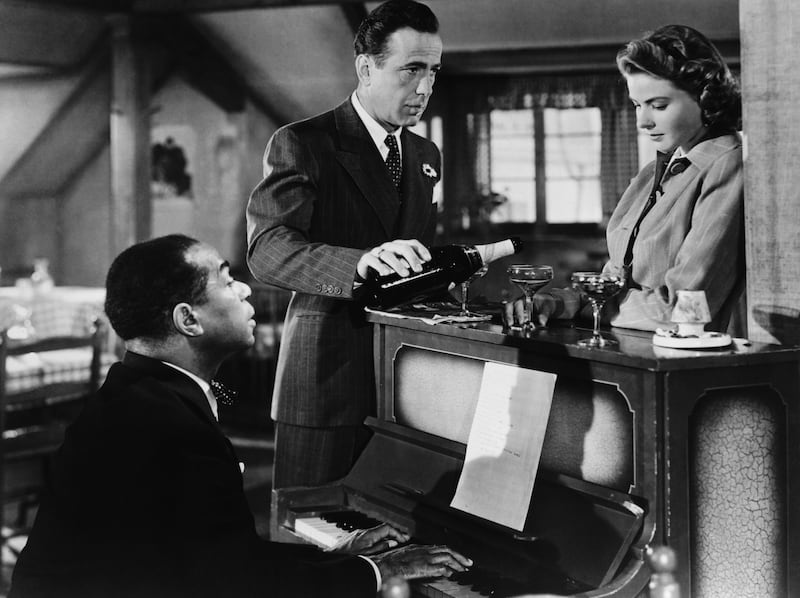
It is with sadness it is written, and with sadness no doubt that it will be read, but it must be acknowledged that there are those reading these lines who have yet to watch Casablanca. Set in the titular Moroccan city during the second World War, the story of Michael Curtiz’s 1942 film revolves around Rick (Humphrey Bogart), the cynical American owner of Rick’s Café, and Ilsa (Ingrid Bergman), once his lover during their carefree days together in prewar Paris, now the dutiful wife of Victor Laszlo (Paul Henreid), the leader of the Czech resistance against the Nazis.
Plot, schmot: if Casablanca continues to enthrall, it’s because of its endlessly quotable dialogue (“You played it for her, you can play it for me. If she can stand it, so can I. Play it, Sam!”) and a love that is doomed just as soon as the director, Michael Curtiz, obliges Bogart to bare his choppers in a snarl that is, or so we assume, intended to be an affectionate smile. Even so, and in a rather shocking result that year, Casablanca actually won the best picture Oscar.
The Kiss
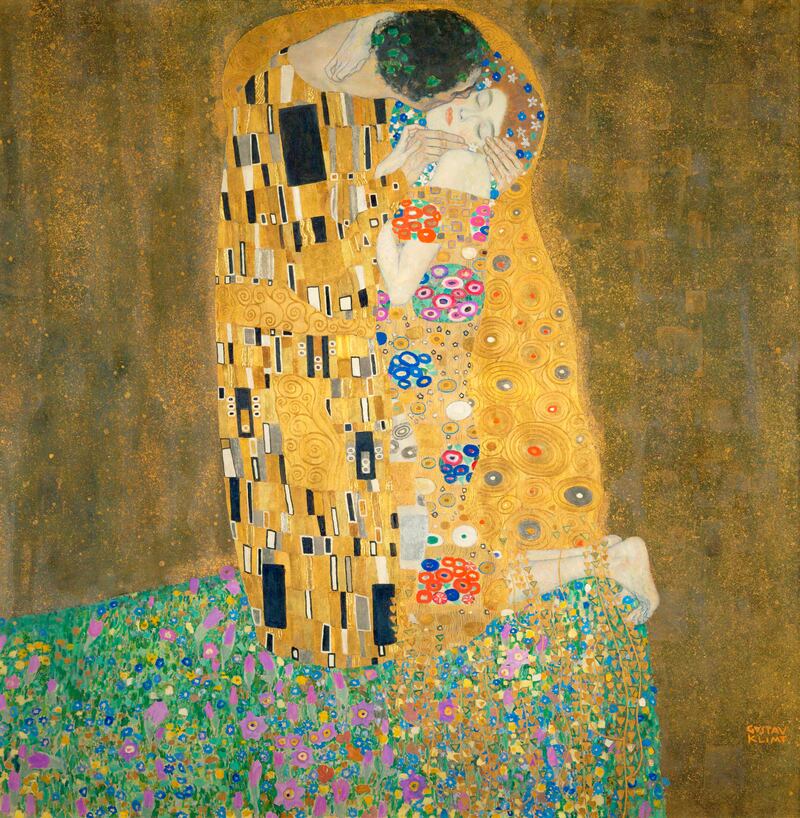
Art history can be a bit of a minefield, especially if we’re exploring visual representations of love, because the unwitting researcher will very quickly find himself inundated with images of semi-clad ingenues basking in the questionable glow of the male gaze. Happily, there’s always Gustav Klimt’s The Kiss, which offers a portrayal of lovers who are not only embracing but appear to be inextricably entangled in one another beneath robes of gold that seem to shimmer together to create a single garment. There’s very little flesh on view except for an elbow here, some toes there: virtually invisible beneath their robes, the lovers seem incorporeal, as if it’s their souls rather than their bodies that are being fused. It is, not to put too fine a point on it, the snuggle raised to the heights of imperishable art, a moment in which is captured the timeless promise of true love that has caused countless viewers since to gnaw their knuckles in envy.
Dido and Aeneas

O Aeneas! Dante harrowed hell for the love of his Beatrice, Don Quixote went about battling windmills for the glory of Dulcinea del Toboso, and Odysseus managed to (eventually) extricate himself from Calypso’s snares to find his way back to Ithaca and Penelope. Aeneas, meanwhile, was ungracious enough to woo Queen Dido and then sail away, leaving her behind on her Carthage shore and the pyre upon which she had no choice, being so publicly shamed, to immolate herself. And all for the sake of a promised Roman empire. No wonder Dido’s tragic love has been the subject of epic poems (Virgil), plays (Marlowe), operas (Purcell), novels (Geras), art (Turner) and mediaeval biography (Boccaccio). She even gave her name to the Novello Award-winning pop star Florian Cloud de Bounevialle O’Malley Armstrong, aka Dido.
Normal People
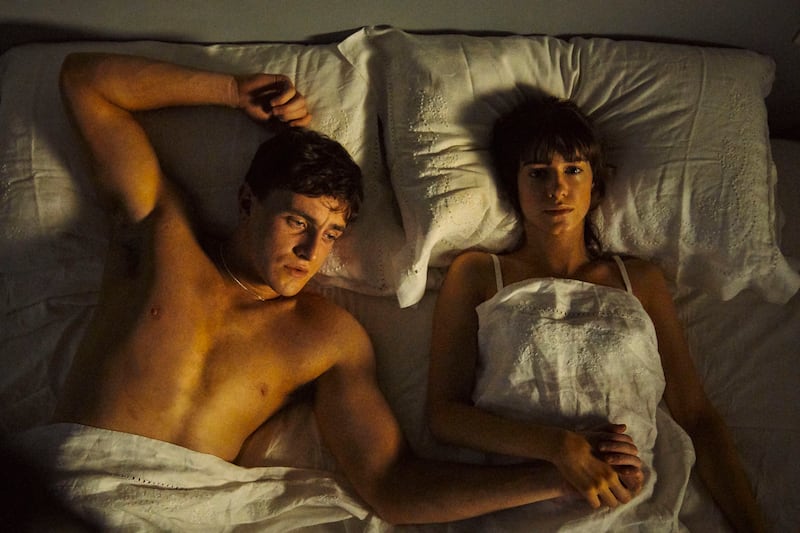
Romance isn’t all about tragic heroines and knights on white chargers, of course; sometimes normal people fall in love too, and there are times when we can only wonder at how it might feel were someone to fall for us the way the entire world fell for the TV adaptation of Sally Rooney’s Normal People during those fever-dream early days of Covid lockdown. He’s a bona-fide Oscar-nominated Hollywood star now, of course, but Normal People was our first glimpse of Paul Mescal, whose portrayal of the moody Connell opposite Daisy Edgar-Jones’s Marianne caused a century-high spike in fainting-couch sales (Ed: check this with Harvey Norman), even if his louchely dangling medallion somehow failed to secure a Bafta nomination for most provocative prop.
Wuthering Heights
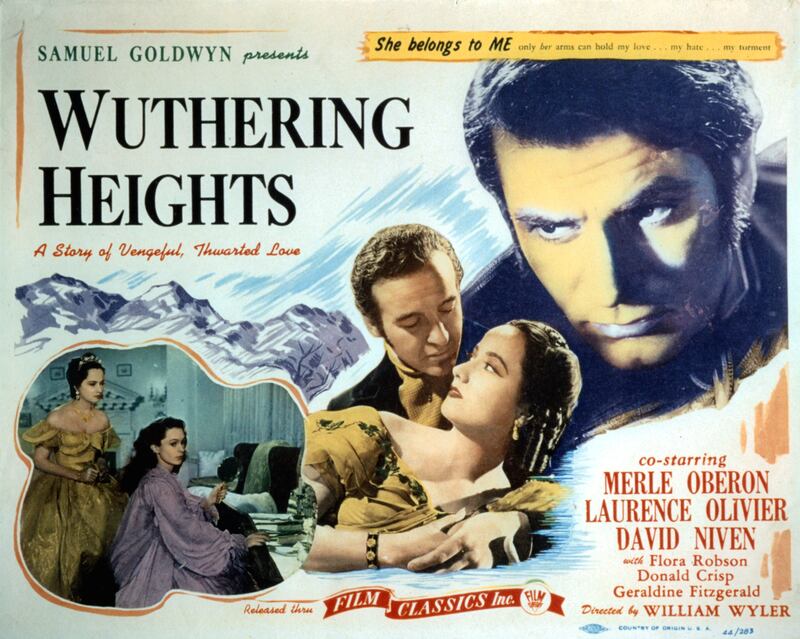
Emily Brontë’s Wuthering Heights has roughly the same relationship to love as hammers have to nails. The story of the turbulent relationship between Cathy Earnshaw and Heathcliff is one of obsession, hatred and revenge that might – just might, mind you – have eventually mellowed into the resigned mutual tolerance of marriage had Cathy and Heathcliff ever leaped the broom. But no! He had a temper like her jealousy, apparently, and her temper was nothing to be sneezed at either, while his jealousy was Olympic-gold standard. Ultimately, though, we have it on very good opinion (ie Cathy’s) that whatever their souls were made out of, his and hers were the very same stuff, which – if we might judge classic romance according to Plato’s theory of twin souls sundered – suggests that Wuthering Heights is not only a love story but also the greatest tale of Platonic love ever told.
Diarmuid and Gráinne
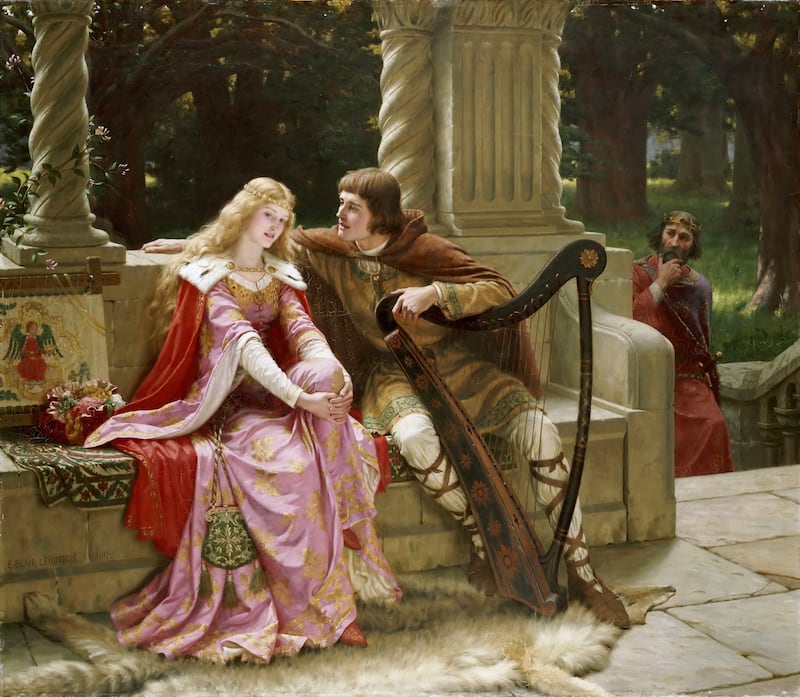
Mythology is easily the most environmentally friendly of all the narrative forms, its stories being endlessly recyclable, with only a name change here or a setting there to set them apart. Diarmuid and Gráinne is a case in point, its tale of young lovers on the run from an ageing king being very similar indeed to that of Tristan and Iseult, or of Helen and Paris. Those of a less romantic bent might find themselves lamenting the betrayal of Ireland’s greatest hero, Fionn mac Cumhaill, who finds himself cuckolded by the young whippersnapper Diarmuid, who eventually receives his comeuppance during a boar hunt under bare Benbulben’s head. O Diarmuid! From being skewered by Cupid’s arrow to gored by a boar’s tusk, he’s a fickle chap, that Eros. Be careful out there this Valentine’s Day, people.











